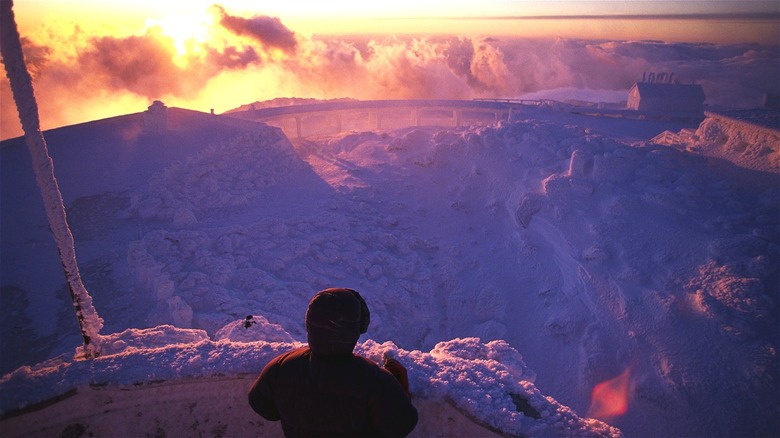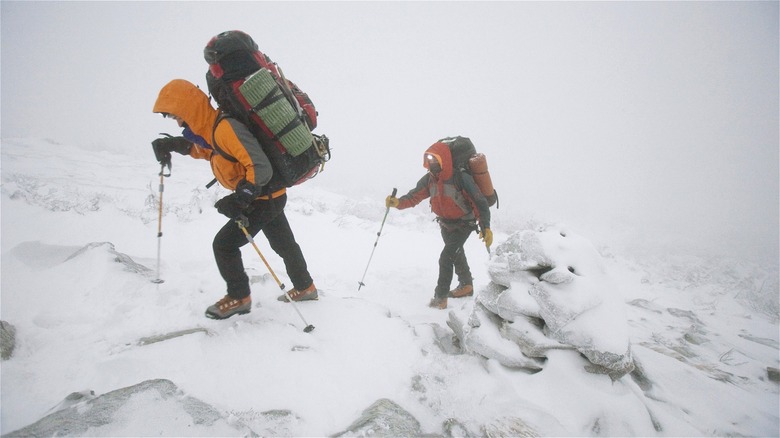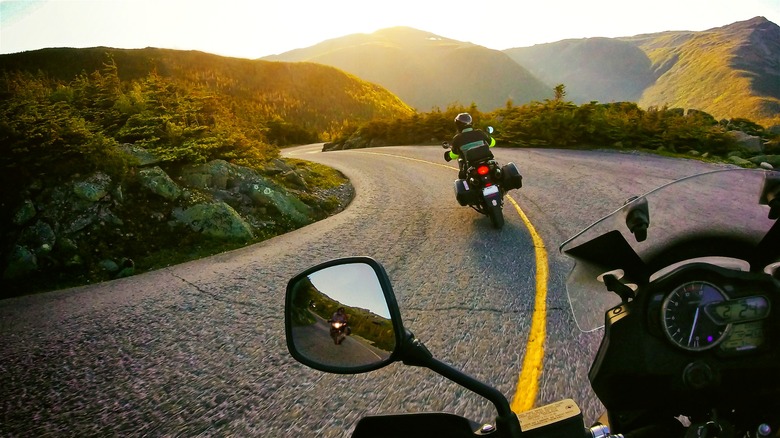Hikers Love This Beautiful But Deadly Mountain Best Known As America's Everest
Situated in northern New Hampshire, Mount Washington tops out at 6,288 feet, making it the highest mountain in the state but falling short of cracking the list of the nation's fifteen highest mountains. Mountains such as Mount Rainier and Mount Whitney are more than twice the height at 14,417ft and 14,505ft, respectively. Denali is even higher, reaching 20,308 feet — the highest in North America.
Mount Washington is even less significant when viewed against the backdrop of the world stage. There are 3,411 named peaks in the Himalayas alone, and the Himalayan Club describes Phawarawang, a 20,862-foot mountain in northern India, as being of "modest height." That should give you an idea of the average scale of the other 3,410 named peaks.
So, with Mount Washington put firmly in its place, how is it such a deadly place? Well, trivial though it may be when looking at the world's great mountain ranges, 6,288 feet isn't to be taken lightly. Food, water, and appropriate clothing should be carefully considered when hiking any mountain, but what makes this one especially perilous is its weather. Mount Washington has recorded wind speeds of up to 231 mph, which was the world record until 253 mph winds smashed into Barrow Island, Australia on April 10, 1996. For context, a 75 mph wind can uproot a large tree — but the incredible wind velocity you may encounter is just one of the horrifying reasons why Mount Washington is so dangerous.
Extreme wind and frosty temperatures
Despite Mount Washington being so much smaller than Mount Everest, it has been called "America's Everest" due to its extremely harsh conditions. The summit is least difficult to traverse from mid-May to mid-October, when average temperatures range from 36.3°F in May to 31.3°F in October. This is probably cold enough weather to hike in, no matter how enthusiastic you might be about finding a "coolcation" destination.
Outside of this period, Mount Washington becomes one of the coldest places on Earth. On January 16, 2004, the ambient temperature plummeted to −43.6°F, which was close to the lowest ever recorded temperature of −46.7°F. Making things even worse, winds of up to 87 miles per hour caused a wind chill value of −102.59°F. Sadly, over 160 people have died climbing the peak, causing Mount Washington to be the world's second deadliest mountain, after Mount Everest.
"Mt. Washington is situated in the presidential range of the White Mountains and so located in the convergence of several storm tracks," weather expert Clemens Teutsh explained about the mountain's extreme wind speed. "It's a barrier for westerly winds and also is influenced by Lows that develop along the coastline. Mt. Washington also lies in between colder air in the North and warmer air in the Southwest. All combined hurricane force winds can be observed many times of the year."
Beautiful scenery on foot and by vehicle
Mount Washington may be one of the world's snowiest places, but it is also beautiful. There are leafy forests, towering hills, and craggy expanses that are similar to the Scottish Highlands, and you don't need hiking boots to see them. Instead, just drive on the Mount Washington Auto Road, America's oldest man-made tourist attraction.
The road runs 7.4 miles and climbs 4000 feet at its peak, offering incredible views of the dangerous Presidential Range. Don't get cavalier, though; the road can get rather narrow at parts. To commemorate your adventure, you'll get a bumper sticker reading, "This car climbed Mount Washington."
If driving up the mountain is too easy for you and you insist on hiking, then go for it. If you come prepared and respect the mountain's challenges and conditions, you'll eventually find yourself summiting one of the most exciting peaks in the United States.


